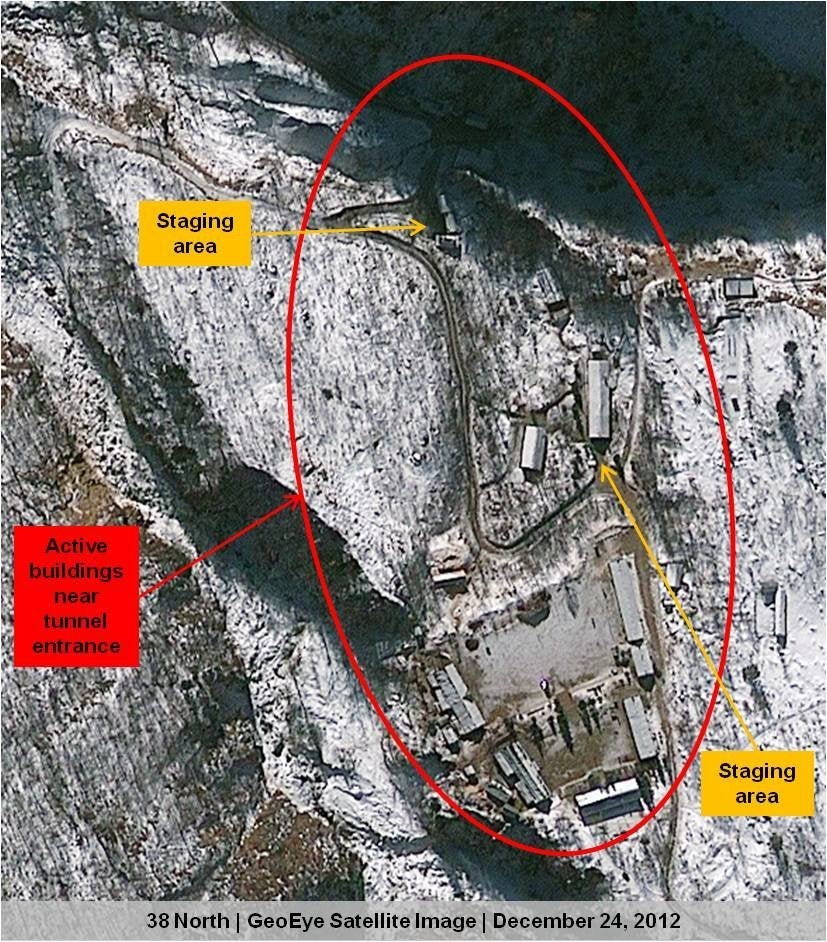By Fredrik Dahl
VIENNA, April 23 (Reuters) - Radioactive gases that could have come from North Korea's nuclear test in February have unexpectedly been detected, a global monitoring body said on Tuesday, possibly providing the first "smoking gun" evidence of the explosion.
But the April 9 measurement - almost two months after Pyongyang said it had carried out the underground detonation - gave no indication of whether plutonium or highly enriched uranium was used, it said.
The time that had passed before the so-called noble gases were picked up made it "very difficult" to distinguish between the two fissile materials, said spokeswoman Annika Thunborg of the Comprehensive Nuclear-Test-Ban Treaty Organisation (CTBTO).
The isolated east Asian state is believed to have tested plutonium bombs in its previous two such blasts, in 2006 and 2009. Any switch to uranium would increase international alarm as it could enable Pyongyang to greatly expand its arsenal.
North Korea threatened nuclear attacks on the United States, South Korea and Japan after new U.N. sanctions were imposed in response to its latest atomic test. But U.S. officials have cast serious doubt on whether it could launch a nuclear missile.
Pyongyang's third nuclear test was registered virtually instantaneously via seismic signals around the world. But no radioactive traces that would have constituted conclusive proof were found in the immediate weeks afterwards.
The Vienna-based CTBTO, which has a worldwide network of monitoring stations, said in mid-March that it was highly unlikely any such radioactivity would be detected.
But Tuesday's statement said it made a significant detection of radioactive noble gases two weeks ago in Takasaki, Japan, about 1,000 km (620 miles) from the test site. Lower levels were picked up at another station in Ussuriysk, Russia.
"Two radioactive isotopes of the noble gas xenon were identified, xenon-131m and xenon-133, which provide reliable information on the nuclear nature of the source," it said.
"Detection of radioactive noble gas more than seven weeks after an event is indeed unusual. We did not expect this and it did not happen in 2009," the CTBTO added, referring to the reclusive country's previous nuclear test.
BOTH BOMB PATHS
Large amounts of xenon gases are produced in fission, a nuclear reaction occurring both in nuclear arms and reactors.
"We are confident that the (North Korean) test site is among the possible source regions," the CTBTO said. But it could still not "exclude completely" that the radioactive traces came from somewhere else.
North Korea's February test yielded a stronger blast than its previous explosion four years ago, and Pyongyang said it had made progress in miniaturising an atomic weapon, essential to fitting it into the cone of a missile.
Tension on the Korean peninsula soared after the test.
While estimates of the explosive power of the latest test vary, most officials and experts assessed it was at least five kilotons - still smaller than the power of the atomic bomb the United States dropped on Hiroshima in World War Two.
North Korea abandoned plutonium production six years ago in response to international pressure, but later acknowledged that it had built facilities to produce enriched uranium, which can also be used in bombs if refined to a high degree.
Experts say plutonium, a byproduct of nuclear reactors, can be difficult to use as bomb material because specifications have to be precise. It could be easy for North Korea to make large quantities of highly enriched uranium.
"It would not surprise me if they have been pursuing both paths to the bomb," Siegfried Hecker, a prominent U.S. scientist who has often visited North Korea, said in an interview published this month on a Stanford University website.
The test-ban treaty was negotiated in the 1990s but has not taken effect because some holders of nuclear technology have not yet ratified it, including the United States and China.
But the CTBTO already monitors possible breaches, deploying about 290 stations around the world to look out for signs of atomic tests, including seismic waves and radioactive traces. (Editing by Mark Heinrich)

